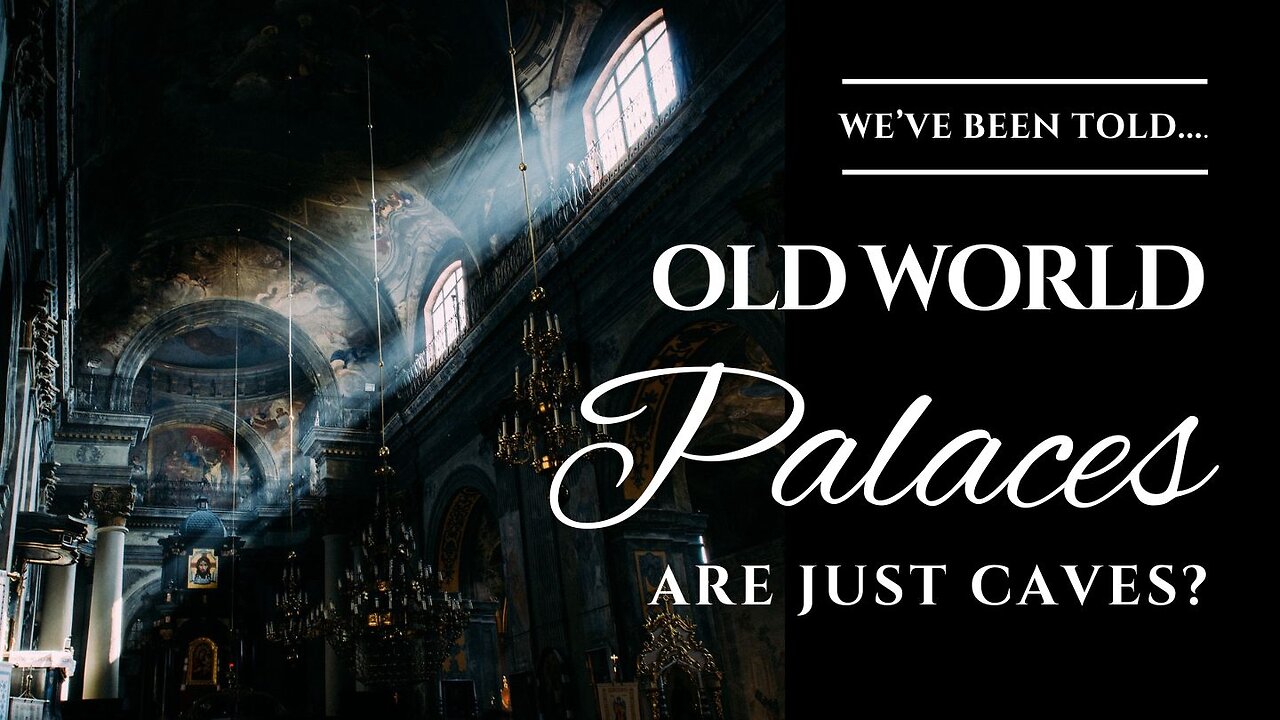Premium Only Content

These Look Like Old World Palaces ... They're Telling Us They're Just Caves.
Today, we go to multiple sets of so called caves, located all over India. We are told that these caves were found in the 1800's. Yet they know all about their history. We are told that they accidentally found them while Tiger Hunting, yet they are attempting to block them from the public today. Are we sure that these are carved into the rock? Or have we located massive palaces that hold the same Old World technology inside their doors...hundreds of miles apart...all found in the same years..."accidentally". Welcome to Episode 73.
SOURCE
My Lunch Break
Fergusson 'discovers' The Cave Temples of India
(the msm narrative)
James Fergusson (1808-1886) was a Scottish architectural historian who made significant contributions to the study of Indian architecture, particularly cave temples. He is best known for his work on documenting and analyzing the cave temples of India, which are rock-cut structures used for religious purposes, primarily by Buddhists, Hindus, and Jains.
Fergusson's interest in Indian architecture led him to travel extensively across India, where he meticulously studied and recorded various architectural sites. His most notable work, "The Cave Temples of India," was published in collaboration with archaeologist James Burgess in 1880. This comprehensive study provided detailed descriptions, drawings, and analyses of numerous cave temples, highlighting their historical and architectural significance.
SOURCE
The cave temples of India:
Fergusson, James, 1808-1886
archive.org
https://archive.org/details/cavetemplesofind00ferguoft
THE BHAJA CAVES
The Bhaja Caves, also known as Bhaje Caves, are a group of 22 rock-cut caves located in the Pune district of Maharashtra, India. These caves date back to the 2nd century BCE and are among the oldest Buddhist caves in India. They were built during the Satavahana period and were used by Buddhist monks for meditation and worship.
CHAITYA HALL The most significant attraction in the Bhaja Caves is the Chaitya Hall, a large hall with a stupa at one end and wooden ribs on the roof. The ribs are considered to be the oldest surviving wooden architecture in the world.
SCULPTURES The caves have several sculptures of Buddha, Bodhisattvas, and other deities, depicting various scenes from the life of Buddha. These sculptures are highly detailed and showcase the skill and artistry of the artisans of that era.
WATER CISTERNS The caves also have several water cisterns that were used to collect rainwater. These cisterns are a testament to the advanced water harvesting techniques used in ancient India.
ARCHITECTURAL INFLUENCE The Bhaja Caves are significant not only for their religious and historical importance but also for their influence on the development of rock-cut architecture in India. The intricate carvings and sculptures on the walls of the caves provide insight into the lifestyle of Buddhist monks and their practices.
SOURCES
Bhaja Caves
https://en.wikipedia.org/wiki/Bhaja_Caves
A Gateway to the Ancient Buddhist Era
https://architecturejourneys.com/bhaja-caves-a-gateway-to-the-ancient-buddhist-era/
-
 47:15
47:15
The Aquarius Bus
1 month agoTour The Most Expensive Tartarian Gilded Age Mansion in America
1.01K3 -
 11:33
11:33
DeVory Darkins
16 hours ago $8.54 earnedJustin Trudeau PANICS after Trump slaps Canada with AGGRESSIVE Tariffs
36.5K118 -
 19:11
19:11
Stephen Gardner
1 day ago🔥HOLY CRAP! Chuck Schumer UNDER INVESTIGATION | 3 HUGE Trump MOVES explained!
62.1K164 -
 LIVE
LIVE
Rotella Games
7 hours agoGrand Theft America - GTA IV | Day 4
571 watching -
 LIVE
LIVE
Scottish Viking Gaming
5 hours ago💚Rumble :|: Sunday Funday :|: Rumble Fam Knows What's Up!!
268 watching -
 LIVE
LIVE
ttvglamourx
4 hours ago $1.55 earnedEGIRL VS TOXIC COD LOBBIES !DISCORD
226 watching -
 3:19:17
3:19:17
LumpyPotatoX2
6 hours agoSCUM: Lumpy Land RP Server - Day #1 - #RumbleGaming
19.7K2 -
 1:42:59
1:42:59
Game On!
18 hours ago $8.06 earnedTop 10 Super Bowl Bets You Can't Afford To Miss!
64.5K7 -
 2:17:02
2:17:02
Tundra Tactical
23 hours ago $22.38 earnedTundra Nation Live : Shawn Of S2 Armament Joins The Boys
155K26 -
 11:00:11
11:00:11
tacetmort3m
1 day ago🔴 LIVE - SOLO RANK GRINDING CONTINUES - MARVEL RIVALS
204K3